Unveiling the Enigma: Exploring the Marvels and Mysteries of Black Holes
Contents
- What is a Black Hole?
- Types of Black Holes
- The Event Horizon
- Black Hole Singularity
- Black Holes and Time Dilation
- Accretion Discs and Jets
- Conclusion
- Frequently Asked Questions
- References
-
Frequently Asked Questions
- 1. How does a black hole form?
- 2. Can anything escape from a black hole?
- 3. Are black holes dangerous to Earth?
- 4. Can black holes be detected?
- 5. Do black holes destroy everything they encounter?
- 6. Are there any black holes close to our solar system?
- 7. What is the size of a black hole?
- 8. Can black holes be used for time travel?
- 9. Can we ever escape the gravitational pull of a black hole?
- 10. How do black holes contribute to the formation of new galaxies?
- References
- Read More
What is a Black Hole?
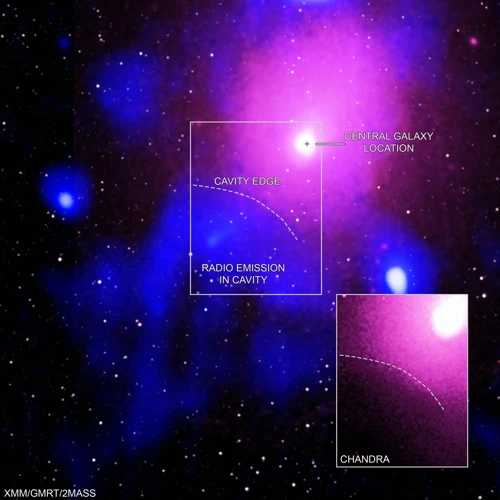
A black hole is a cosmic wonder that defies comprehension. It is a region in space where gravity is so intense that nothing, not even light, can escape its grasp. These enigmatic entities are born from the remnants of massive stars that have reached the end of their lives. When a star exhausts its nuclear fuel, it undergoes a catastrophic collapse, causing its core to implode under its own gravitational pull. This collapse leads to the formation of a black hole – a point in space with infinite density known as a singularity. As matter continues to fall into the black hole, an invisible boundary called the event horizon is formed, beyond which anything gets trapped forever. The concept of black holes challenges our understanding of the laws of physics and beckons us to explore the outer limits of our knowledge. Let’s dive into the depths of this celestial phenomenon and unravel its marvels.
Definition and Characteristics
A black hole’s defining characteristic is its extraordinary gravitational pull, which is so strong that even light cannot escape its clutches. The immense mass of a black hole causes space-time to be distorted, creating a gravitational force that swallows everything in its vicinity. The extent of a black hole’s gravitational reach is determined by its mass, with larger black holes exerting a more powerful gravitational force. The size of a black hole is often measured by its event horizon – the point of no return where the escape velocity equals the speed of light. Within the event horizon lies the singularity, a point of infinite density where the laws of physics as we understand them break down. Black holes can range in size, with stellar black holes having masses several times that of our Sun, while supermassive black holes can contain millions or even billions of solar masses. Despite their invisible nature, the effects of black holes can be seen through interactions with surrounding matter, such as the formation of accretion discs and the ejection of powerful jets. Understanding the intricacies of black holes is not only a thrilling scientific pursuit but also an opportunity to glimpse the wonders of our universe.
Formation of Black Holes
The formation of black holes is a captivating process that occurs under specific cosmic conditions. There are various scenarios that can lead to the birth of a black hole:
1. Stellar Collapse: When a massive star exhausts its nuclear fuel, it can no longer support its own weight. The star undergoes a catastrophic collapse, causing its core to implode. If the core’s mass exceeds a certain threshold, known as the Chandrasekhar limit, a stellar black hole is formed.
2. Supernova Explosions: In some cases, when a massive star exhausts its fuel, it undergoes a colossal explosion known as a supernova. The intense gravitational forces involved in the aftermath of a supernova can lead to the formation of stellar black holes.
3. Compact Object Mergers: Black holes can also be formed through the merger of two compact objects such as neutron stars. The collision and subsequent merger of these dense objects can give rise to a new, more massive black hole.
4. Primordial Black Holes: It is believed that during the early stages of the universe, fluctuations in density could have allowed for the formation of /origins-silk-road-tracing-ancient-trade-routes/ primordial black holes. These black holes would have formed shortly after the Big Bang, with their origin still shrouded in mystery.
The formation of black holes is a testament to the incredible forces that shape our universe. By studying their formation, scientists hope to unlock further insights into the mysteries of these cosmic phenomena.
Types of Black Holes
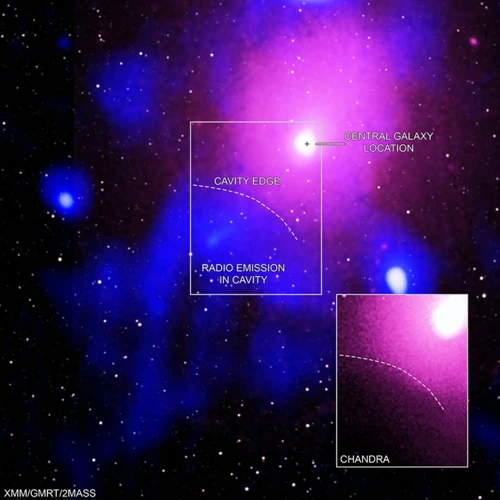
There are various types of black holes that exist in the universe, each with its own unique characteristics.
1. Stellar Black Holes: These black holes are formed from the remnants of massive stars that have undergone a gravitational collapse. They typically have a mass several times greater than that of our Sun. Stellar black holes are scattered throughout the galaxy, remnants of cataclysmic events that mark the end of a star’s life.
2. Supermassive Black Holes: These gargantuan black holes reside at the centers of galaxies, including our own Milky Way. With masses millions or even billions of times greater than that of the Sun, supermassive black holes exert a powerful gravitational pull on surrounding matter and play a crucial role in the formation and evolution of galaxies.
3. Primordial Black Holes: These hypothetical black holes are believed to have formed in the early universe, emerging from the dense conditions shortly after the Big Bang. Primordial black holes come in various sizes, ranging from tiny micro black holes to larger ones that can be comparable to stellar black holes. However, their existence is still a subject of ongoing research and exploration. Understanding the different types of black holes gives us a glimpse into the diverse and awe-inspiring nature of these cosmic phenomena.
Stellar Black Holes
Stellar black holes, as the name suggests, are black holes that form from the remnants of massive stars. When a star with a mass several times greater than that of the Sun exhausts its nuclear fuel, it undergoes a supernova explosion. The inner core of the star collapses under its own gravity, resulting in the formation of a stellar black hole. These black holes can have a mass ranging from a few times that of the Sun to several tens of times greater. Stellar black holes are incredibly dense, with a gravitational pull so strong that even light cannot escape their grasp. They have a compact size, typically measuring only a few miles in radius. Despite their small size, they contain an immense amount of mass. Stellar black holes play a remarkable role in the universe, influencing the evolution of galaxies and participating in cosmic phenomena such as accretion discs and powerful jets that emanate from their vicinity. Their mysterious nature continues to captivate scientists and astronomers, inspiring them to delve deeper into the mysteries of the cosmos.
Supermassive Black Holes
In the vast expanse of the cosmos, we encounter supermassive black holes, colossal behemoths that defy imagination. These black holes are significantly larger than their stellar counterparts, with masses millions or even billions of times that of our Sun. Situated at the centers of galaxies, they anchor the swirling galactic arms and shape the cosmic landscapes. The origin of supermassive black holes remains a subject of intense study and speculation. One prevailing theory suggests that they form through the gradual accumulation of mass over billions of years. Another posits that they could arise from the merger of smaller black holes, growing in size and scope over cosmic timescales. The supermassive black hole lurking at the heart of our own Milky Way galaxy, Sagittarius A*, has been a subject of in-depth research, providing insights into the life cycle and behavior of these cosmic giants. Scientists continue to unravel the mysteries surrounding these massive enigmas, delving into the intense gravitational forces and mind-boggling phenomenon occurring within their vicinity. Truly, supermassive black holes stand as powerful testaments to the grandeur and complexity of the universe.
Primordial Black Holes
Primordial black holes are a fascinating and elusive type of black hole that are believed to have formed in the early moments of the universe. Unlike stellar and supermassive black holes, which form from the collapse of massive stars, primordial black holes are thought to have arisen from the extreme density fluctuations that occurred during the cosmic inflation era. These tiny black holes, with masses ranging from as small as an asteroid to as large as a mountain, are difficult to detect due to their size and lack of visible emissions. However, scientists have proposed various methods to indirectly observe their existence, such as searching for the gravitational effects they have on surrounding matter or detecting the bursts of gamma rays they could emit. Studying primordial black holes can provide valuable insights into the early universe and may even offer clues about the nature of dark matter. While their existence remains a tantalizing possibility, much more research and observation are needed to fully unravel the mysteries of these primordial remnants from the dawn of time.
The Event Horizon
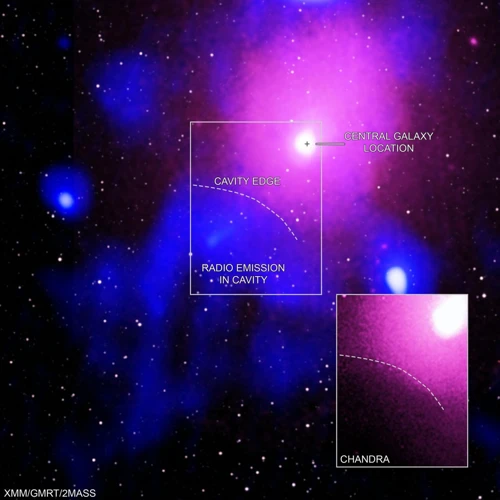
The event horizon of a black hole is the point of no return, where the gravitational pull becomes so immense that escape is impossible. It marks the boundary beyond which not even light can escape the clutches of the black hole’s gravitational forces. Once an object crosses the event horizon, it is doomed to be consumed by the black hole’s singularity. The size of the event horizon is determined by the mass of the black hole, with larger black holes having larger event horizons. Interestingly, the event horizon is not a physical barrier; instead, it represents the point at which gravitational forces become overpowering. Anything that enters the event horizon effectively disappears from the observable universe. This enigmatic concept raises intriguing questions about the nature of space, time, and the fate of objects that venture too close to the edge. To understand the profound implications of the event horizon, we must delve further into the mysteries of black holes.
Understanding the Event Horizon
The event horizon is a boundary surrounding a black hole that holds great significance in our understanding of these cosmic wonders. It marks the point of no return, beyond which the gravitational pull becomes so strong that escape becomes impossible. At the event horizon, the velocity required to overcome the gravitational force exceeds the speed of light, making it unreachable even for particles of light itself. As an observer approaches the event horizon, they would experience time dilation, where time slows down compared to the outside world. This phenomenon leads to fascinating theoretical implications, including the possibility of time travel in the vicinity of black holes. The event horizon is a captivating concept that captures the imagination and leaves us pondering the mysteries of the universe. To delve deeper into the wonders of event horizons and their profound impact, check out our detailed article on writing process tips and strategies.
Effects of the Event Horizon
The event horizon of a black hole is a boundary beyond which nothing can escape its gravitational pull. Once an object crosses this point of no return, its fate is sealed. The effects of the event horizon are both fascinating and mind-boggling. One of the most intriguing consequences is a phenomenon known as time dilation. Time slows down significantly as you approach the event horizon, relative to an observer far away from the black hole. This means that while only a short period of time may pass for someone falling into a black hole, centuries or even millennia may go by for those outside. This distortion of time is a consequence of Einstein’s Theory of General Relativity, which describes how gravity warps both space and time. Additionally, the immense gravitational force near the event horizon causes a phenomenon called gravitational lensing. Light passing close to the black hole gets bent and distorted, creating mesmerizing visual effects. These mind-bending consequences of the event horizon challenge our understanding of the universe and push the boundaries of what we thought was possible. To learn more about the intriguing aspects of black holes, explore our comprehensive guide to dealing with jealousy and possessiveness in Ophiuchus partnerships.
Black Hole Singularity
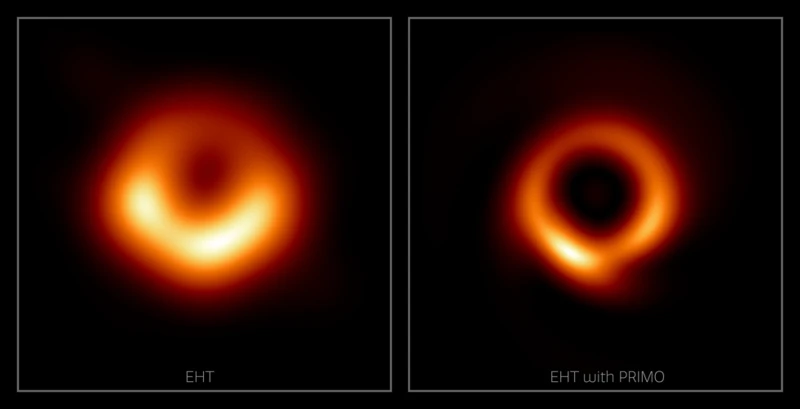
The black hole singularity is a mind-boggling concept that lies at the heart of these cosmic enigmas. It refers to a point of infinite density and infinitesimal size within a black hole. According to general relativity, the singularity is surrounded by the event horizon, which acts as a one-way door, allowing matter and energy to enter but preventing their escape. The singularity is a region where the laws of physics as we currently understand them break down, giving rise to paradoxes and mysteries that intrigue scientists. It is a point where space and time cease to exist in their conventional form, making it impossible for our current theories to explain what occurs within this unimaginable realm. While the nature of the singularity is still largely unknown, some physicists speculate that it may be a gateway to an entirely different universe or that it could be connected to other cosmic phenomena such as wormholes. However, the true nature of the singularity remains shrouded in uncertainty and continues to captivate the minds of scientists and astronomers worldwide.
Concept of Singularity
The concept of singularity lies at the heart of black hole physics, representing the unimaginably dense and infinitely small point at the center of a black hole. According to our current understanding, when a massive star collapses under its own gravity, it forms this singularity. At a singularity, the laws of physics as we know them break down, and the usual rules governing space and time cease to exist. It is a point of infinite mass and density, where matter is squeezed into an infinitesimal volume. The gravitational pull generated by the singularity is so immense that it warps the surrounding space-time fabric, creating the phenomenon we know as a black hole. The singularity is shrouded in mystery, as it challenges our existing theories and beckons us to delve deeper into the nature of the cosmos. Its existence raises profound questions about the fundamental structure of the universe and the limits of our understanding.
Quantum Physics and Singularity
Quantum Physics and Singularity: The study of quantum physics plays a significant role in our understanding of black hole singularities. At the singularity, the laws of physics as we know them break down, and quantum effects become dominant. Quantum physics deals with the behavior of matter and energy at the smallest scales, where the principles of uncertainty and indeterminacy prevail. Scientists believe that at the center of a black hole’s singularity, matter and energy are compressed to an infinitesimally small point, testing the limits of our current understanding of physics. The singularity is a realm where gravity is infinitely strong, and the laws of general relativity cease to hold. To truly comprehend the singularity, physicists seek a unified theory that combines quantum mechanics and gravity, a task that has yet to be accomplished. The outcome of successfully merging these two branches of physics could revolutionize our understanding of the universe and provide insights into the mysteries of black holes.
Black Holes and Time Dilation

Black Holes and Time Dilation: One of the mind-bending implications of black holes is their association with time dilation. According to Einstein’s Theory of General Relativity, gravity curves space and time. Near a black hole, where gravity is exceptionally strong, time flows differently compared to areas with weaker gravitational forces. This phenomenon, known as time dilation, means that time moves slower near a black hole relative to a reference point further away. Essentially, the intense gravitational pull near a black hole warps space-time, causing time to stretch. As an object approaches the event horizon, time dilation becomes more pronounced, and the flow of time nearly grinds to a halt. This fascinating aspect of black holes not only challenges our conventional understanding of time but also raises intriguing questions about the potential for time travel. While the concept of traversing through time remains theoretical, the extreme conditions near a black hole offer a glimpse of the extraordinary possibilities that exist within the fabric of our universe.
Einstein’s Theory of General Relativity
revolutionized our understanding of gravity and its relationship with the fabric of space and time. According to this theory, gravity is not simply a force between two objects but rather a curvature in the fabric of spacetime caused by the presence of mass and energy. This curvature dictates how objects move in its vicinity. In the context of black holes, the theory of general relativity explains the extreme gravitational forces that create their vast gravitational pull and distorted spacetime. The immense mass of a black hole warps the surrounding spacetime to such an extent that even light, the fastest-moving entity in the universe, is trapped within the event horizon. Einstein’s theory serves as the foundation for understanding the dynamics of black holes and their implications on the behavior of matter and energy in the cosmic realm.
Time Travel Possibilities near Black Holes
Time Travel Possibilities near Black Holes: The mind-bending concept of time travel has long captivated the human imagination, and black holes add another layer of intrigue to this fascination. According to Einstein’s Theory of General Relativity, black holes possess an incredibly strong gravitational pull that distorts both space and time. This phenomenon, known as time dilation, causes time to pass differently near black holes compared to regions farther away. As one approaches the event horizon of a black hole, time appears to slow down from the perspective of an external observer. This means that an individual near a black hole would experience time at a considerably slower rate compared to someone farther away. While this time dilation effect does not necessarily lead to actual time travel, it opens up possibilities for exploring the boundaries of time and the nature of our universe. The complexities of time near black holes continue to puzzle scientists, and further research is needed to fully understand and unlock the mysteries of time within these cosmic phenomena.
Accretion Discs and Jets
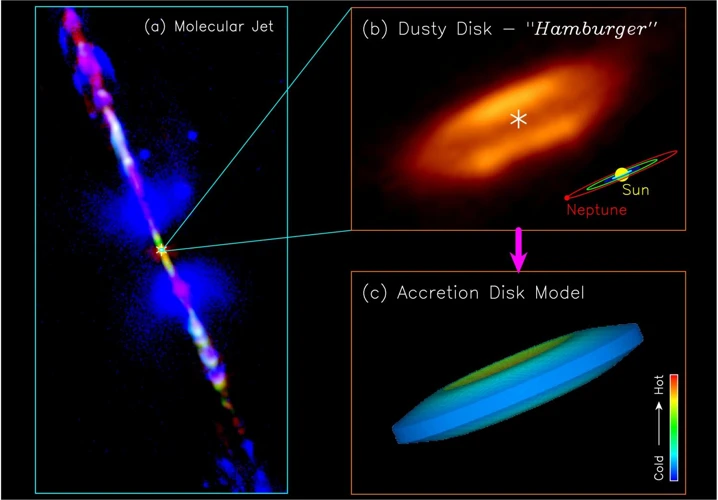
Accretion discs and jets are fascinating phenomena associated with black holes. An accretion disc is a disk-shaped structure formed around a black hole when it actively pulls in nearby matter. As matter from surrounding space falls into the gravitational pull of the black hole, it forms a swirling disk of hot gas and dust. The intense gravitational forces within the disc cause the material to heat up, emitting strong electromagnetic radiation across different wavelengths, including X-rays. This radiation can be detected by telescopes, providing valuable insights into the nature of black holes.
Accompanying the accretion disc, powerful jets can also be observed shooting out from some black holes. These jets are narrow beams of energetic particles that are propelled at incredible speeds away from the black hole. Although the exact mechanism behind jet formation is still not fully understood, it is believed to result from the interaction of magnetic fields and the rotation of the black hole. Jets can extend for thousands of light-years, carrying vast amounts of energy with them. Their study offers valuable information about the behavior and influence of black holes on their surrounding environments.
Both accretion discs and jets are the result of the profound gravitational influence exerted by black holes. Studying these features provides scientists with valuable clues about the nature and behavior of these cosmic phenomena. By analyzing the properties of accretion discs and jets, astronomers can gain further insights into the characteristics and effects of black holes in the vast expanse of the universe.
Formation and Structure of Accretion Discs
Formation and Structure of Accretion Discs: Accretion discs are a fascinating phenomenon that occurs around black holes and other celestial objects. These discs are composed of gas, dust, and other interstellar material that is drawn towards the black hole by its immense gravitational pull. As matter spirals closer to the event horizon, it forms a swirling disc-like structure around the black hole. This process is known as accretion. The accretion disc has distinct regions with varying temperatures and densities. Closest to the black hole, the material is hotter and more turbulent, emitting powerful X-rays and gamma rays. Further out, the disc becomes cooler and denser, with particles colliding and sticking together, leading to the formation of planetesimals and potentially even planets. The structure and behavior of accretion discs are complex, influenced by factors like the black hole’s mass, spin, and the properties of the infalling gas. Scientists study these discs to gain insights into the physics of black holes, the origins of galaxies, and the formation of planetary systems.
Powerful Jets Emanating from Black Holes
When it comes to the mysteries of black holes, powerful jets are one of the most intriguing aspects. These jets are incredibly energetic streams of particles that shoot out from the vicinity of black holes at astonishing speeds. They can extend for thousands of light-years into space and are observed in both stellar and supermassive black holes. The exact mechanism behind the formation of these jets is still not fully understood, but scientists believe they are created by accretion discs. An accretion disc is a swirling disk of hot gas and dust that surrounds a black hole. As matter spirals into the black hole, immense energy is released, causing some of the material to be expelled in the form of these powerful jets. The origin and composition of these jets remain a subject of ongoing research and excitement in the field of astrophysics. Investigating these celestial phenomena provides us with invaluable insights into the extreme physics and dynamics that govern black holes and the surrounding cosmic environment.
Conclusion
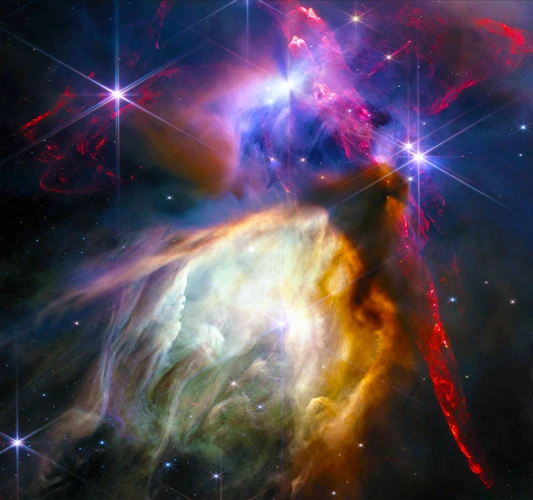
In conclusion, black holes continue to be one of the most fascinating and mysterious phenomena in the universe. From their formation to the mind-boggling concepts of singularity and time dilation, these cosmic entities challenge our understanding of the laws of physics and push the boundaries of our scientific knowledge. As we delve deeper into the study of black holes, we gain a greater appreciation for the vastness and complexity of the cosmos. The exploration of black holes has shed light on the fundamental nature of space, time, and gravity, offering insights into the very fabric of our universe. With ongoing advancements in technology and the continued curiosity of scientists, we can anticipate further discoveries and revelations about these captivating celestial objects. The mysteries of black holes persist, captivating our imaginations and inspiring us to reach for the stars in our quest for knowledge and understanding.
Frequently Asked Questions

FAQs About Black Holes
1. What happens if you fall into a black hole?
If you were to fall into a black hole, the intense gravitational pull would stretch your body into what scientists call “spaghettification.” It is a process where you would be stretched into long, thin strands due to the extreme tidal forces.
2. Can black holes die?
Black holes do not die in the traditional sense. However, they can slowly lose mass over time through a process known as Hawking radiation, named after physicist Stephen Hawking. This radiation causes the black hole to slowly evaporate.
3. Can anything escape a black hole’s gravity?
No, nothing can escape a black hole’s gravitational pull once it crosses the event horizon. The gravitational pull is so strong that even light cannot escape, which is why black holes appear black and seem to absorb all light.
4. How do scientists detect black holes if they are invisible?
Scientists detect black holes indirectly through their effects on surrounding matter and light. They study the movement of nearby stars, gas, and other celestial objects to identify the gravitational influence of a black hole in that region.
5. What is the biggest black hole discovered?
The biggest black hole discovered to date is known as TON 618, located about 10.4 billion light-years away from Earth. It has a mass estimated to be 66 billion times that of our sun.
6. Can black holes collide?
Yes, black holes can collide with one another. When two black holes merge, they create an even more massive black hole. These mergers release a tremendous amount of energy and are often accompanied by gravitational waves.
7. Do black holes have a size or shape?
Black holes do not have a defined size or shape. Their size is determined by the amount of mass they contain. As for their shape, they are spherical due to their intense gravity pulling matter toward the center.
8. Are there any black holes near the Earth?
There are no known black holes in close proximity to our solar system. The nearest black hole is named V616 Monocerotis, but it is still about 3,000 light-years away from Earth.
9. Can black holes be used for time travel?
While black holes have fascinating effects on time, current scientific understanding suggests that it is highly unlikely for anyone to use them as a means of time travel. The extreme forces and energy near black holes make them complex and uncharted territory in terms of time manipulation.
10. Can black holes be destroyed?
Black holes are incredibly resilient and hard to destroy. Even if they lose mass through Hawking radiation, they will continue to exist as long as their singularity persists. It would require an immense amount of energy and a yet-unknown mechanism to destroy a black hole entirely.
References
Frequently Asked Questions

1. How does a black hole form?
A black hole forms when a massive star reaches the end of its life cycle and collapses in on itself under the force of gravity, crushing its matter into an infinitely small point called a singularity.
2. Can anything escape from a black hole?
Once an object crosses the event horizon of a black hole, it is believed that nothing can escape, not even light. This phenomenon is what gives black holes their name.
3. Are black holes dangerous to Earth?
Black holes located far away from Earth pose no direct threat to our planet. However, their gravitational pull can have a significant impact on nearby celestial bodies and star systems.
4. Can black holes be detected?
Yes, black holes can be detected indirectly by observing their gravitational effects on surrounding matter, such as stars or gas clouds. Scientists also use technology like telescopes and X-ray detectors to study the emissions from accretion discs around black holes.
5. Do black holes destroy everything they encounter?
While black holes can devour nearby matter and celestial bodies, not everything that approaches a black hole gets consumed. Some objects get pulled into a highly energized region of space called the accretion disc, while others are ejected in powerful jets.
6. Are there any black holes close to our solar system?
The nearest known black hole to our solar system is about 1,600 light-years away. It is part of a binary system called V616 Monocerotis, or V616 Mon for short. It is not considered a threat to us as it is too far away.
7. What is the size of a black hole?
The size of a black hole is determined by its mass. A stellar black hole can have a radius of around 10 kilometers, while a supermassive black hole can span millions of kilometers.
8. Can black holes be used for time travel?
While the concept of time travel near black holes is popular in science fiction, the current scientific consensus suggests that it is highly unlikely. The extreme gravitational forces near black holes would make time travel incredibly challenging, if not impossible.
9. Can we ever escape the gravitational pull of a black hole?
The gravitational pull of a black hole is so strong because of its immense mass. As of now, our scientific understanding suggests that it is highly unlikely for anything to escape once it has passed the event horizon of a black hole.
10. How do black holes contribute to the formation of new galaxies?
Supermassive black holes play a vital role in the formation and evolution of galaxies. They have the ability to shape the structure of galaxies through the powerful jets and energy they release, influencing the distribution of matter and star formation.
References
- Unraveling the Mystery of Black Holes | Tufts Now
- Black holes, explained – UChicago News
- What Is a Black Hole?






